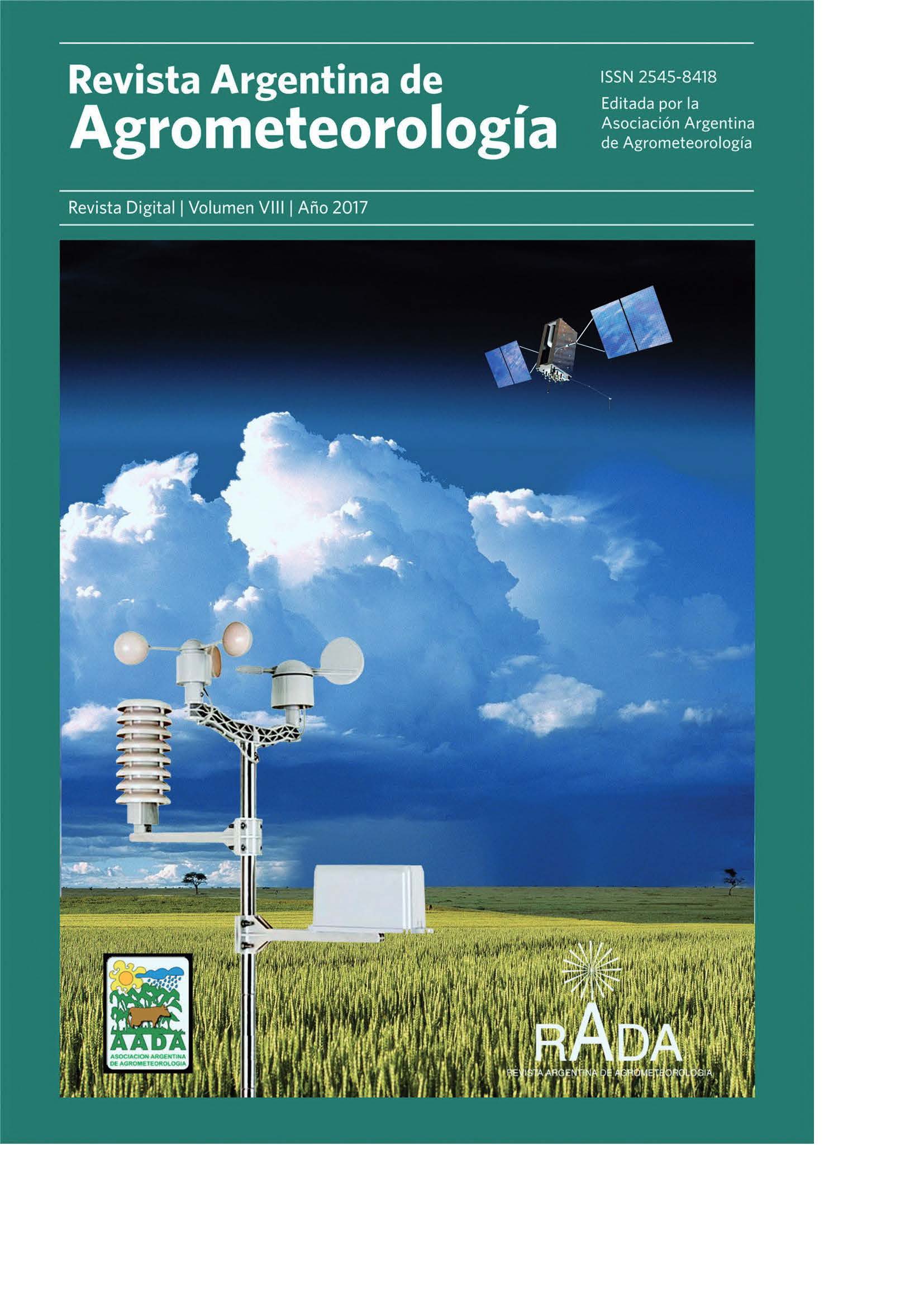Ver ítem
- xmlui.general.dspace_homeCentros Regionales y EEAsCentro Regional La Pampa - San LuisEEA AnguilArtículos científicosxmlui.ArtifactBrowser.ItemViewer.trail
- Inicio
- Centros Regionales y EEAs
- Centro Regional La Pampa - San Luis
- EEA Anguil
- Artículos científicos
- Ver ítem
Indices de cambio climático en Anguil: tendencias del periodo 1961-2016
Resumen
Durante las últimas décadas se han observado cambios climáticos en
Sudamérica, con mayor frecuencia de eventos extremos, aumento de noches cálidas y disminución de noches frías. En la región central argentina disminuyeron los días con heladas y la precipitación tiende al aumento. Este trabajo tuvo como objetivo analizar tendencias anuales y estacionales de temperatura y precipitación, a partir de índices de cambio climático propuestos por la Organización
[ver mas...]
Durante las últimas décadas se han observado cambios climáticos en
Sudamérica, con mayor frecuencia de eventos extremos, aumento de noches cálidas y disminución de noches frías. En la región central argentina disminuyeron los días con heladas y la precipitación tiende al aumento. Este trabajo tuvo como objetivo analizar tendencias anuales y estacionales de temperatura y precipitación, a partir de índices de cambio climático propuestos por la Organización Meteorológica Mundial, utilizando datos diarios de Anguil en la región central de la Argentina. En el periodo evaluado
(1961/2016) se hallaron tendencias anuales positivas en la cantidad de noches cálidas y tropicales, periodos calientes, temperatura mínima diaria, días con lluvia más intensa y cantidad de precipitación anual. Tendencias negativas se encontraron en cantidad de días con heladas y noches frías, en amplitud
térmica diaria, y en cantidad de días secos consecutivos. Características que han sido atribuidas al cambio climático como el incremento de temperatura,
cambios en los comportamientos de las precipitaciones e incremento de
eventos extremos, han sido encontradas en este trabajo. Deberán continuarse los análisis con series temporales más largas. Trabajos posteriores deberán
evaluar cómo estos cambios inciden de manera positiva o negativa en el ciclo de los cultivos de la región.
[Cerrar]
During the last decades, climatic changes have been observed in South
America, with more frequent extreme events, increase of warm nights and
decrease of cold nights. In the central Argentine region the days with frost diminished and the precipitation tends to increase. The objective of this work was to analyze annual and seasonal temperature and precipitation trends, based on climate change indexes proposed by the World Meteorological Organization,
[ver mas...]
During the last decades, climatic changes have been observed in South
America, with more frequent extreme events, increase of warm nights and
decrease of cold nights. In the central Argentine region the days with frost diminished and the precipitation tends to increase. The objective of this work was to analyze annual and seasonal temperature and precipitation trends, based on climate change indexes proposed by the World Meteorological Organization, using daily data from Anguil in the central region of Argentina. In the period evaluated (1961/2016), there were positive annual trends in the
number of warm and tropical nights, hot periods, minimum daily temperature, days with more intense rainfall and amount of annual precipitation. Negative trends were found in number of days with frost and cold nights, in daily thermal amplitude, and in number of consecutive dry days. Characteristics that have been attributed to climate change, such as temperature increase, changes
in precipitation behavior and increase in extreme events, have been found in this work. Analyzes with longer time series should be continued. Further work should assess how these changes have a positive or negative impact on the crop cycle in the region.
[Cerrar]

Autor
Fuente
Revista Argentina de Agrometeorología 8 : 29-42 (2017)
Fecha
2017-11-08
Editorial
Asociación Argentina de Agrometeorología
ISSN
2545-8418
Formato
pdf
Tipo de documento
artículo
Palabras Claves
Derechos de acceso
Abierto
 Excepto donde se diga explicitamente, este item se publica bajo la siguiente descripción: Creative Commons Attribution-NonCommercial-ShareAlike 2.5 Unported (CC BY-NC-SA 2.5)
Excepto donde se diga explicitamente, este item se publica bajo la siguiente descripción: Creative Commons Attribution-NonCommercial-ShareAlike 2.5 Unported (CC BY-NC-SA 2.5)


